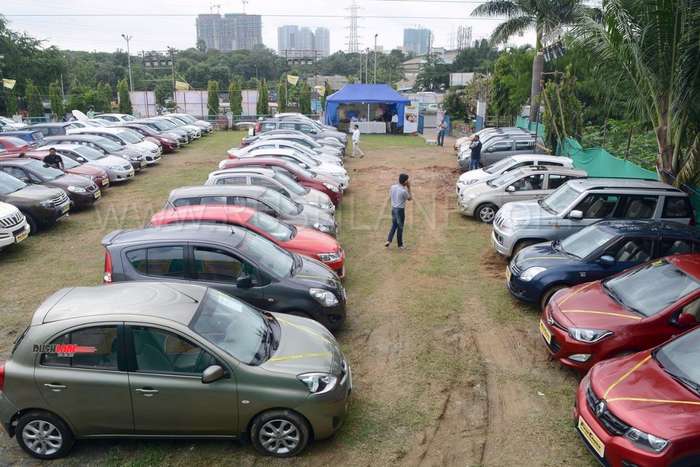Table of Contents
Traffic congestion is a major problem in many cities around the world, causing delays, greenhouse gas emissions, and degradation of the quality of life for citizens.
Reducing traffic congestion is a complex challenge, requiring a multi-faceted approach that takes into account different factors such as urban planning, public transport, regulatory policies and the use of technology. To effectively reduce traffic congestion, it is important to understand the main causes of this problem.
The most common causes of traffic congestion are increasing numbers of vehicles on the road, inadequate road infrastructure, high travel times, congestion at intersections, and traffic accidents. To reduce congestion, it is therefore necessary to reduce the demand for car travel and improve the efficiency of public transport and bike mobility.
An effective approach to reducing congestion is to encourage the use of public transport by providing quality service, frequent schedules and affordable fares. It is also important to invest in transit infrastructure, such as dedicated lanes for bus or bicycles, stations and electronic payment systems.
Bike sharing system
Benefits of bike-sharing schemes include transport flexibility, reduced vehicle emissions, health benefits, reduced congestion and fuel consumption, and financial savings for individuals. But what’s special about public bikes is the idea of sharing. For instance, a bike sharing company can provide large cities more sustainable transportation solutions and help reduce congestion in city centers.
By sharing with other users through a publicly accessible system, individuals can use their bicycles “on demand” without the costs and liabilities associated with ownership. In this way, these systems enable people who may not use a bicycle to enjoy the benefits of cycling.
Traffic light management
Traffic congestion is a severe hassle in lots of towns across the world. It can cause delays and driver frustration, and can also lead to increased air pollution and greenhouse gas emissions.
One way to ease traffic congestion is to revolutionize the way traffic lights are managed. Traffic light management systems can use data from sensors and GPS devices to optimize traffic flow, reduce delays, and improve traffic flow. In addition, these systems help save fuel and reduce emissions by reducing the need for vehicles to idle at red lights. Traffic lights managed by computers and AI can also adjust in real time according to changes in traffic conditions.
Improving Bus Service
Another effective strategy for reducing traffic congestion in cities is to create dedicated bus lanes. Bus lanes are designed to prioritize buses over other vehicles, allowing them to move faster and more efficiently. By doing so, buses can provide a more reliable and faster alternative to driving, which can encourage more people to use public transportation instead of driving their own vehicles.
Dedicated bus lanes can also help reduce air pollution and greenhouse gas emissions by reducing the number of cars on the road. Furthermore, it can lead to savings in fuel costs and improve overall traffic flow on the road.
In addition to bus lanes, cities can also use other transit priorities such as traffic signal prioritization, dedicated transit corridors, and efficient routing to further reduce traffic congestion. These strategies can help ensure that public transportation is a more attractive option for commuters, which can help reduce traffic congestion and improve overall mobility in cities.
More Park and Ride
As anyone who has been stuck in traffic will attest, traffic is a major problem in many cities.
It wastes time, increases pollution, and can even lead to accidents. There are several ways to reduce congestion, one of which is to increase park-and-ride facilities.
These special parking spaces are located near public transport such as bus stops and train stations.
By encouraging people to leave their cars at home and use public transport instead, park-and-ride schemes help reduce traffic on the streets.
It also helps alleviate parking shortages in high-traffic areas. Park-and-ride trips are becoming an important part of urban infrastructure as more and more people switch to public transportation.
Encourage carpooling
Smart cities encourage ride-sharing to reduce traffic. Carpooling is a more sustainable mode of transportation that helps alleviate traffic congestion. A carpool is a carpool where two or more of hers ride in one vehicle. This can be done by having a friend, family member or co-worker go to the same general area. Ride-sharing helps reduce the number of cars on the road and makes it easier for everyone to get where they want to go.
Too many private vehicles trying to use the same road during peak hours will cause congestion. Encouraging carpooling can reduce traffic and make roads more efficient.
In conclusion, it is clear that traffic congestion is a major problem for cities around the world. However, there are many effective strategies for reducing it. By encouraging sustainable modes of transportation, such as walking, biking, and public transit, cities can reduce the number of cars on the road and thus reduce traffic congestion.
It is essential that local governments work closely with residents and mobility companies to implement congestion reduction strategies tailored to their city. This can include road pricing policies, tax incentives to encourage the use of public transport, and outreach programs to encourage behavioral changes.



